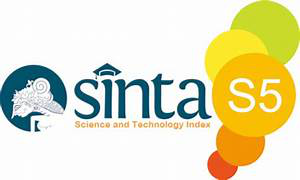PENGGUNAAN INTERNET DAN MEDIA SOSIAL ORANG MUDA DI PEDESAAN (Studi Kasus Orang Muda di Desa Ciasmara Kecamatan Pamijahan Kabupaten Bogor)
Abstract
Abstract
Digital developments show a positive trend from year to year, especially for Indonesia based on data from WeAreSocial that collaborates with Hootsuite in 2018, it is known that the number of internet users reaches 132 million people. This number shows that half or more than 50 percent of Indonesia's population can access the internet. Young people and the internet are two things that are closely related. The magnitude of the penetration of young people relates to the type of content accessed. Based on this, it is interesting to know the use of internet and social media for young people in rural areas. This study aims to: 1) Know the internet use of young people in Ciasmara Village; 2) Knowing the use of social media for young people in Ciasmara Village. Quantitative methods are used to process data using descriptive analysis to determine the characteristics of respondents and the use of the internet and social media. This study found that the internet use of young people in Ciasmara Village is known that the largest frequency is rare, with an average duration of 3.4 hours per week, access on social media, the place / media used is mobile phones. The use of social media for young people in Desa Ciasmara is known that the biggest frequency is rare, with an average duration of 2.6 hours per week access to social media, the place / media used is school computers.
Keywords: Young people, rural, internet use, social media use.References
DAFTAR PUSTAKA
APJII. 2016. Penetrasi & Perilaku Pengguna Internet Indonesia Survey 2016. Asosiasi Pengguna Jasa Internet Indonesia
_____. 2017. Penetrasi & Perilaku Pengguna Internet Indonesia Survey 2017. Asosiasi Pengguna Jasa Internet Indonesia
Badan Pusat Statistik. 2017. Kecamatan Pamijahan Dalam Angka: Badan Pusat Statistik Kabupaten Bogor.
Denzin, N K dan Lincoln, Y S. 2009. Handbook of Qualitative Research. Yogyakarta: Pustaka Pelajar
Gatot. 2015. Siaran Pers Tentang Riset Kominfo Dan Unicef Mengenai Perilaku Anak Dan Remaja Dalam Menggunakan Internet. Pusat Data Dan Sarana Informatika Kementerian Komunikasi Dan Informatika. https://kominfo.go.id/index.php/content/detail/3834/siaran+pers+no.+17pikominfo22014+tentang+riset+kominfo+dan+unicef+mengenai+perilaku+anak+dan+remaja+dalam+menggunakan+internet+/0/siaran_pers. Diakses pada tanggal 20 Oktober 2018, pukul 16: 30
Horrigan, J B. 2002. New Internet Users: What They do Online, What They Don’t and Implications for the Net’s future. Journal Pew Internet and American Life Project. Melalui http://www.pewinternet.org.
Mulawarman, Nurfitri A D. 2017. Perilaku Pengguna Media Sosial beserta Implikasinya Ditinjau dari Perspektif Psikologi Sosial Terapan. Buletin Psikologi Vol.25 No.1, hal 36-44
Nasrullah, R. 2015. Media sosial (perspektif komunikasi, budaya, dan sosioteknologi). Jakarta: Simbiosa Rekatama Media.
Bagus R. Inilah Perkembangan Digital Indonesia Tahun 2018. https://www.goodnewsfromindonesia.id/2018/02/06/inilah-perkembangan-digital-indonesia-tahun-2018 diakses pada 10 Oktober 2018 pukul 16.00
Singarimbun M, Effendi S. 2010. Metode Penelitian Survei. Jakarta: LP3ES
Soeparno K, & Sandra, L. 2011. Social psychology: The passion of psychology. Buletin Psikologi Vol. 19 No.1, hal 16-28.
Widyaratna T, Danny, dan Filicia C, 2001, Analisis Kepuasan dan Loyalitas Konsumen terhadap Tingkat Penjualan di Warung Bu Kris (Studi Kasus pada Ayam Penyet sebagai Menu Unggulan Warung Bu Kris), Jurnal Manajemen dan Kewirausahaan, Vol. 3, no. 2, September 2001, p. 85 – 95.
DOI: 10.33751/wahana.v24i2.946
Refbacks
- There are currently no refbacks.













